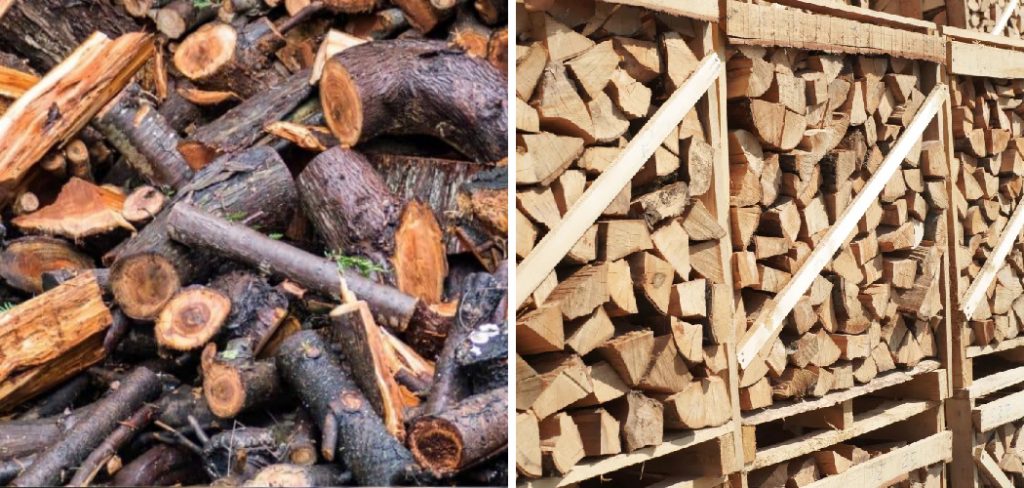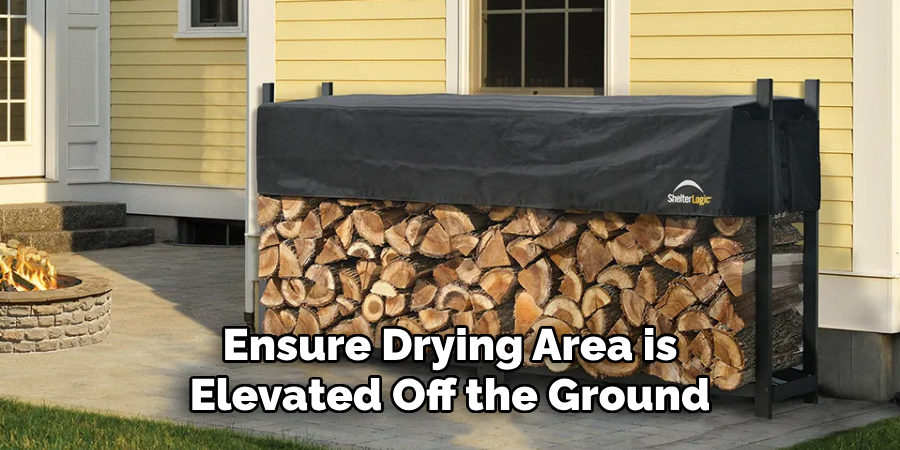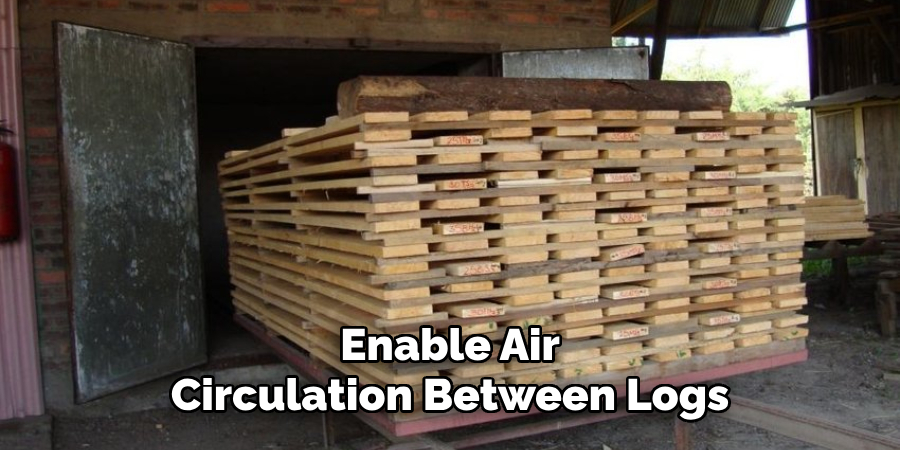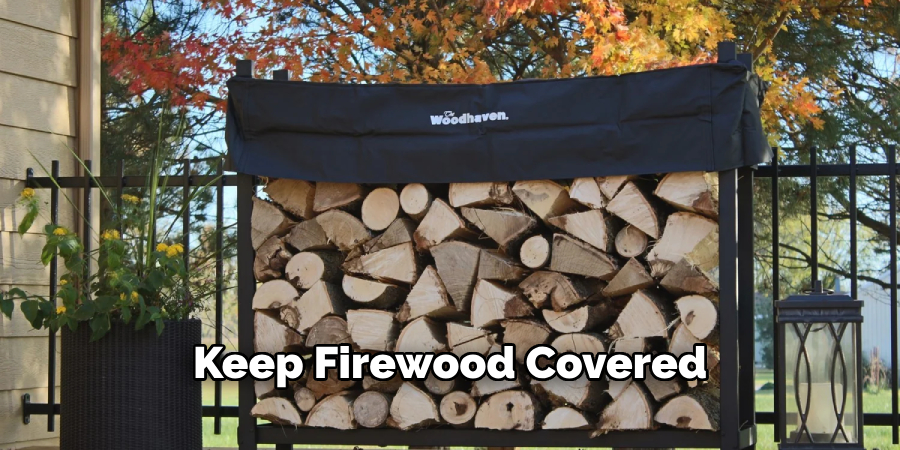Dry firewood is essential for achieving efficient burning and optimal heat output during colder months. When wood contains too much moisture, it can lead to poor combustion, increased smoke production, and lower heat efficiency, all of which can negatively affect your home heating.

However, drying firewood can be particularly challenging during winter when humidity levels are high and outdoor temperatures make it difficult to season wood effectively. This article aims to provide you with effective methods on how to dry firewood fast indoors, ensuring that you can enjoy a warm and cozy fire without the hassle of damp wood. By following the steps outlined, you will not only improve the burning efficiency of your firewood but also enhance your overall home heating experience.
Understanding Firewood Moisture Content
Why Moisture Content Matters
The moisture content of firewood is a critical factor that directly impacts its burning efficiency. Wood with high moisture content (above 20%) will produce more smoke and less heat, as a significant amount of energy evaporates the water instead of generating warmth. This not only results in a cooler fire but can also lead to creosote buildup in your chimney, increasing the risk of chimney fires. Ideally, firewood should have a moisture content of 15-20% to ensure optimal burning performance and heat output, providing a cleaner, hotter, more enjoyable, and more efficient fire.
How to Measure Moisture Content
A moisture meter is the most reliable method for accurately assessing the moisture levels of your firewood. These handheld devices insert prongs into the wood and give an immediate reading of its moisture content, allowing you to gauge whether the wood is ready for burning.
Alternatively, you can estimate moisture content by performing a simple test: split a piece of wood and examine the color of the inside. Dry wood typically appears lighter and has a hollow sound when knocked together, while wet wood will look darker and feel heavy. However, these methods may not be as precise as a moisture meter.
Preparing Firewood for Indoor Drying
Selecting the Right Wood
When drying firewood indoors, the type of wood you select plays a significant role in the drying process. Hardwoods, such as oak and maple, tend to burn longer and produce more heat but take longer to dry. On the other hand, softwoods like pine and fir typically dry faster due to their lower density and higher resin content, making them ideal for quick drying.

In addition to selecting the right species, splitting logs is crucial for enhancing air circulation. Splitting the wood into smaller pieces exposes more surface area to the air, leading to faster moisture evaporation. This technique expedites the drying process and helps achieve a more uniform moisture content throughout the wood.
Initial Outdoor Drying
Before bringing your firewood indoors, allowing it to season outdoors for a few months is essential for effective drying. Outdoor exposure helps to reduce the initial moisture content of the logs. Consider using stacking methods that promote airflow, such as stacking your wood in a single row rather than piling it high. This approach allows for better air circulation and enables sunlight to reach the lower logs, further aiding in drying. By adequately preparing your firewood by selecting appropriate wood types and utilizing effective stacking methods outdoors, you set a solid foundation for successful indoor drying.
How to Dry Firewood Fast Indoors: Creating Optimal Indoor Drying Conditions
Establishing the right environment is crucial for effectively drying firewood indoors. This involves selecting a suitable location, implementing air circulation techniques, and controlling the temperature to facilitate moisture evaporation.
Location Selection
Choosing the right spot for indoor drying is essential for rapid moisture removal. Ideal locations include well-ventilated areas like basements, garages, or utility rooms, where airflow is more manageable. It’s essential to avoid locations that tend to accumulate high humidity or have restricted air circulation, such as near windows or damp corners.
Ensuring that the drying area is elevated off the ground, perhaps using pallets or racks, allows air to flow beneath the wood, further enhancing the drying process. Aim to find a spot that gets some indirect sunlight, as sunlight can aid in cooking off moisture, but be cautious of direct exposure that could lead to uneven drying.

Using Fans and Dehumidifiers
Setting up fans is highly effective in boosting air circulation around your firewood. Placing oscillating fans strategically around the drying area will help to distribute air evenly, preventing stagnant pockets of moisture from forming. Running the fans continuously during the drying phase is advisable to maintain consistent airflow. Additionally, using a dehumidifier can significantly enhance the drying effectiveness.
These devices work by removing excess moisture from the air, which helps lower indoor humidity levels and accelerates the drying process of your firewood. Depending on the size of your drying area and the volume of wood, consider choosing a dehumidifier rated for larger spaces to achieve the best results.
Temperature Control
Temperature plays a vital role in the drying of firewood. Keeping the drying area warm will facilitate moisture evaporation from the wood. Consider using space heaters or activating central heating systems to raise the room’s temperature for efficient heat management.
Ideally, maintaining a steady temperature between 60°F to 80°F (15°C to 27°C) will contribute positively to the drying process. Avoid sudden temperature fluctuations, as this can lead to condensation on the wood surfaces, counteracting your drying efforts. By continuously monitoring the temperature and maintaining it at an optimal level, you increase the chances of quickly achieving firewood with the ideal moisture content, ready for efficient burning.
How to Dry Firewood Fast Indoors: Arranging Firewood for Maximum Airflow
Properly arranging your firewood is essential to ensure that it dries efficiently and achieves the optimal moisture content. Maximizing airflow around the wood not only aids in moisture evaporation but also promotes uniform drying, preventing unwanted issues like mold growth or excessive shrinkage. Several stacking techniques and methods can be implemented to create a well-ventilated arrangement, allowing for effective airflow throughout the stacks.
Stacking Techniques
To begin with, when stacking firewood, it is important to do so loosely to enable air circulation between logs. A crisscross pattern can be particularly effective in creating gaps for air to flow.
By alternating the direction of the logs as you stack them, you create a web of space that allows air to move freely, facilitating quicker drying. Additionally, using pallets or racks, elevating the stack off the ground prevents moisture from the earth from penetrating the wood and encourages airflow underneath the stacked logs. This technique allows sufficient ventilation and elevates the wood off damp surfaces, further reducing the risk of moisture accumulation.

Rotating and Turning Logs
Periodic rotation and turning of the logs can also enhance the drying process. As the wood dries, exposing all sides of each log to the circulating air and heat is essential. By rearranging the logs regularly, you ensure that moisture does not become trapped on one side, which could lead to uneven drying and consumption difficulties later on.
Moving the outer logs to the inner part of the stack and the inner logs to the outside will help maintain an even drying environment. This practice can be especially beneficial if the drying conditions within the room fluctuate, ensuring that all portions of the wood benefit from the best exposure to air and warmth.
Monitoring Progress
Regularly monitoring the moisture content of your firewood with a moisture meter is crucial to assess the effectiveness of your drying methods. By taking readings at consistent intervals, you can track the progress and adjust your drying techniques as needed based on the changes in conditions within your drying area. If moisture levels remain high after an appropriate duration, or if certain logs are drying more slowly than others, it might be necessary to revise your arrangement or increase airflow with additional fans.
Alternatively, you could consider repositioning the wood to a warmer or less humid area within the space. Regular checks, adjustments, and attention to the drying environment ensure that your firewood will reach the desired moisture content efficiently, resulting in a cleaner and more efficient burn when the time comes to light the fire.
Safety Considerations
Fire Safety
When managing firewood, it is crucial to keep it stored away from heat sources and open flames to prevent accidental ignition. Ensure that the drying area is well-ventilated, which reduces the risk of fire hazards by facilitating air circulation and minimizing the build-up of flammable gases. Regularly inspect the drying space for any potential fire risks, ensuring that all safety measures are in place to protect your home and property.
Indoor Air Quality
Maintaining low humidity levels is essential for preventing the growth of mold and mildew on your firewood. High humidity can create ideal conditions for these harmful fungi, negatively impacting indoor air quality. Consider using air purifiers equipped with HEPA filters to improve air quality further, particularly if you’re drying wood indoors. These devices help to filter out airborne pollutants and moisture, contributing to a healthier living environment while keeping your firewood in optimal condition.

Alternative Drying Methods
Using a Wood Kiln
Wood kilns offer an efficient solution for rapidly drying firewood, especially for those with larger quantities or specific moisture content requirements. Small-scale wood kilns can be set up indoors or outdoors, utilizing controlled heat and airflow to achieve optimal drying conditions. However, while they provide quick results, one must consider the initial investment costs and potential energy consumption. Additionally, indoor kilns may require careful monitoring to prevent overheating and ensure safety.
Microwave Drying
Microwave drying is a practical technique for drying small batches of firewood quickly. Placing pieces of wood in the microwave for short intervals effectively evaporates moisture. However, it’s essential to be cautious when using this method, as uneven heating can cause the wood to crack or splinter. Moreover, microwave drying is limited to smaller pieces, making it impractical for larger logs or significant quantities. Ensuring proper moisture levels before microwaving is crucial for safety and effectiveness.
Maintaining Dry Firewood
Proper storage is vital to maintaining the ideal condition of your dried firewood. Ensure that the firewood is kept in a dry, covered area to shield it from rain and humidity, which could lead to moisture reabsorption. Utilizing firewood racks or shelves keeps the wood organized and promotes airflow, further enhancing moisture management.
Storage Tips
Storing dried firewood in a dry, covered area helps prevent moisture reabsorption. Employing firewood racks or shelves can facilitate organized storage and improve airflow around the wood stack.
Long-Term Maintenance
Regularly checking and rotating stored firewood is crucial to ensure even drying and prevent moisture build-up. Keeping firewood covered and elevated off the ground will also help maintain dryness, contributing to its longevity.

Conclusion
In summary, effectively learning how to dry firewood fast indoors involves several key techniques that enhance the drying process. Maintaining adequate airflow, periodically rotating logs, and monitoring moisture levels with a moisture meter all contribute to achieving optimal dryness more efficiently. Additionally, considering alternative methods, such as using a wood kiln or microwave drying, can further expedite the process.
We encourage you to apply these methods in your firewood drying routine for both efficiency and safety. Properly dried firewood burns cleaner and more efficiently, providing significant benefits for home heating and contributes to a healthier indoor environment by reducing smoke and harmful emissions. By investing time and effort into mastering these techniques, you can ensure a reliable and effective heating source throughout the colder months.
About the Author
Adrian Green, a lifelong woodworking enthusiast, shares his passion for the craft through The Woodenify Blog. With a foundation built on years of hands-on experience in his father’s woodworking shop, Adrian is dedicated to helping others learn and grow in the world of DIY woodworking. His approach to woodworking combines creativity, practicality, and a deep appreciation for the art of building with your own hands. Through his blog, he inspires individuals of all skill levels to embark on their own woodworking journeys, creating beautiful, functional pieces of furniture and décor.
Professional Focus
- Specializes in DIY woodworking projects, from furniture to home décor.
- Provides step-by-step guides and practical tutorials for woodworkers of all skill levels.
- Dedicated to helping readers build confidence and skill through easy-to-follow instructions and tips.
- Passionate about fostering a community of makers who can share, learn, and grow together.
Education History
- University of Craft and Design – Bachelor of Fine Arts (BFA) in Woodworking and Furniture Design
- Woodworking Apprenticeships – Extensive hands-on training with skilled craftsmen to refine carpentry and furniture making techniques.
- Online Courses & Masterclasses – Continued education in advanced woodworking techniques, design principles, and specialized tools
Expertise:
- DIY woodworking, carpentry, furniture making, and home décor projects.
- Creating accessible tutorials and guides for beginner to advanced woodworkers.
- Sharing the joys and satisfaction of woodworking, from raw materials to finished products.
